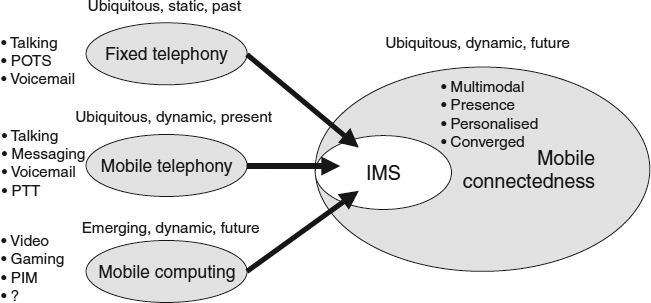14.2 MOBILE TRANSFORMATION
The mobile world is going to transform. Eventually, we shall move from mobile telephony to mobile computing. In Chapter 3, we looked at the trends and discussed this transition more in terms of evolving from a paradigm of ‘dial-to-talk’ (or ‘text-to-message’) towards a more general ‘click-to-connect’. IMS is a cause for optimism in making this change because it enables an architecture that supports generic connectivity between two devices, no longer bound solely to voice and texting protocols and services.
Telephony has a long history and is well understood by its users. It is also one-dimensional – with telephony, all you can do is make a call. On the other hand, mobile computing doesn't have much of a history, nor a user base. What is it and what is it good for? There are precious few ideas and no consensus. Advocates of the Web 2.0 idea are convinced that mobile computing means unfettered mobile access to the Web, including the latest and greatest technologies, such as AJAX. Certainly the public has almost zero conception of mobile computing, so they aren't about to rush out and pay for it. Nevertheless, we know that we need to get there, especially with the growing pressures from convergence, with Mobile TV most likely acting as a catalyst.

Figure 14.1 IMS as a catalyst for future mobile paradigm of connectedness.
IMS is an interesting development ...
Get Next Generation Wireless Applications: Creating Mobile Applications in a Web 2.0 and Mobile 2.0 World, 2nd Edition now with the O’Reilly learning platform.
O’Reilly members experience books, live events, courses curated by job role, and more from O’Reilly and nearly 200 top publishers.

